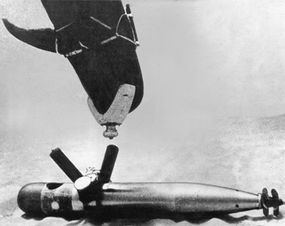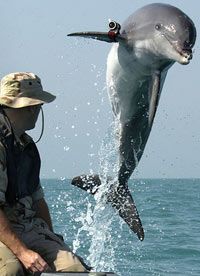Animals, for better or for worse, have a long history as faithful allies to humans in warzones. Perhaps most notable of the battlefield animals is the horse, who throughout human history has aided soldiers during combat. Up to this day, militaries still train dogs to guard sites and soldiers, find explosives and conduct search and rescue. But still another animal aids the military by going where dogs and horses can't -- underwater.
Undersea mines have been responsible for sinking or damaging many ships since World War II. In fact, more ships have been damaged from mines than from all other causes (such as active enemy attacks) combined [source: Babb].
Advertisement
Realizing their irresistible friendliness, trainability and affinity for humans, the U.S. Navy has been training bottlenose dolphins (and some sea lions) since the 1960s to find explosive mines underwater, as well as other suspicious objects and swimmers. Though they don't technically disarm the dangerous mines, the dolphins do locate the mines for humans to subsequently disarm or avoid them.
Using fish as a reward, the Navy has trained dolphins to spot suspicious, manmade, metal objects from far away. The dolphin learns to search for a mine, and upon finding one, swims back up to the boat to poke an appropriate signifier, such as a ball, with its nose. The humans then give the dolphin a buoy or a special device known as an acoustic transponder, which the animal leaves in the area it spotted the mine. This device produces a distinct sound that allows human divers to find it later.

Though the Navy can equip dolphins with cameras and sensors, it's really the dolphins' natural abilities that make them perfect for the job. Unlike the mechanical devices the Navy builds to detect mines, dolphins can tell the difference between man-made and natural objects, an invaluable skill given that enemies craftily disguise mines. It turns out that dolphins have a remarkably sophisticated sonar ability (using their sense of hearing) to perceive objects in even very murky water. This ability is so sophisticated that human technology hasn't come close to replicating it.
Read on to learn more about the dolphin's sonar power.
Advertisement




